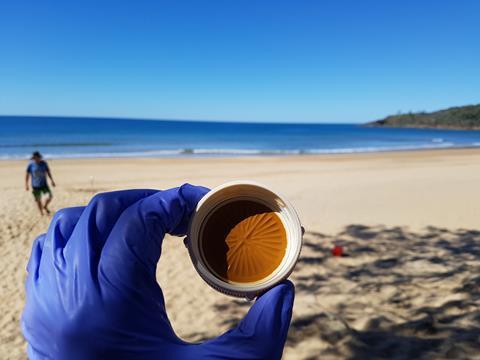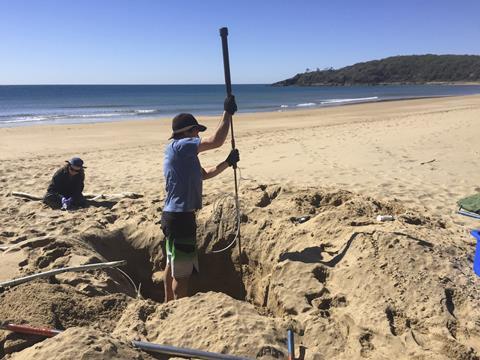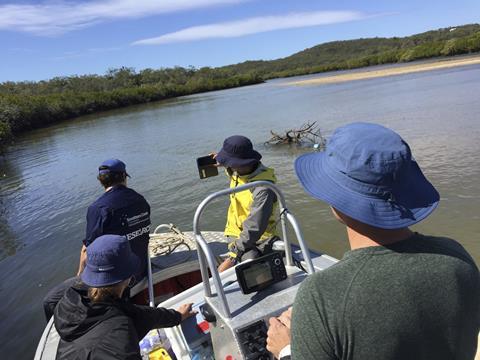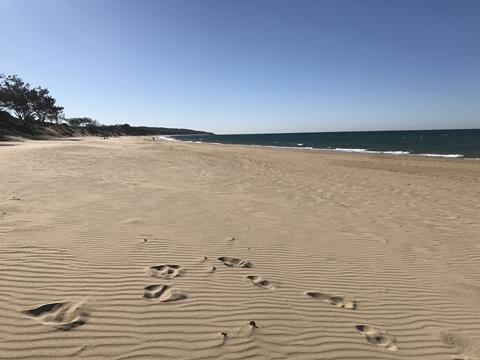Microbes in estuaries could be counteracting greenhouse gas effects to a greater extent than previously thought, a new study has revealed.
Researchers at Southern Cross University studying a subterranean estuary (STE) in the subtropical north of Australia found that the microbiome situated in different zones of the STE continuum likely contributes to a significant reduction in greenhouse gas (GHG) and nutrient loads, suggesting that previous studies relying solely on terrestrial endmembers may have overestimated nutrient fluxes to the coastal ocean.

The study, entitled ‘Microbiome mediating methane and nitrogen transformations in a subterranean estuary’, has recently been accepted for publication by Environmental Microbiology, an Applied Microbiology International publication.
Microbial communities
“By characterizing distinct microbial community prevalence in the STE and biogeochemical fluxes from terrestrial sites to the coastal oceans we were evaluating the impact on adjacent vulnerable coastal ecosystems like the Great Barrier Reef as well as contributions to GHG source-sink dynamics,” corresponding author Sebastian Euler, a PhD student at SCU, said.
The researchers used 16S metagenomics and biogeochemical characterizations to evaluate microbial communities transforming greenhouse gases and nutrients in the STE environment, which are an important but understudied coastal biogeochemical reactors.

“To achieve this we excavated 5 sampling locations at a suitable, pre-scouted STE location in Agnes Water (Queensland, Australia) and used a push point piezometer to extract microbial and environmental samples at 3 depths per location. The samples were stored in tubes and put on ice to later be analyzed at the SCU and Australian genome research facility (AGRF) labs,” Mr Euler said.
Terrestrial end
“After completing the bioinformatics and data analysis, we found that the concentration of methanogens was highest at the terrestrial end of the subterranean estuary (STE) - up to 2.81%. This was accompanied by the highest concentrations of methane, carbon dioxide, and dissolved organic carbon in the porewater.
“In contrast, methane concentrations and conservative mixing analysis as well as relative abundances of methanotrophs suggested that the mixing zones situated in the central STE were likely sinks of methane. The concentration of nitrifying and ammonia oxidizing prokaryotes were also highest in the mixing zone - up to 11.65% of the total microbiome.
“Additionally we found that the concentrations of methane, ammonium, and dissolved organic carbon all decreased by more than 50% from the terrestrial to the oceanic end of the 15-meter transect.
Localized abundance
What surprised the team was the highly localized abundance of certain microbial communities, most namely methanogen families at the terrestrial end and cyanobacterial families at the deepest depth in the mixing zone, as well as by the considerable decrease of nutrient loads between the terrestrial and oceanic ends (>50%).

“Our findings suggest that STE environments will need to be accounted for sufficiently in both GHG budget contributions of coastal ecosystems as well as nutrient flux considerations to the coastal ocean and adjacent vulnerable ecosystems like coral reefs,” Mr Euler said.
Source-sink dynamics
“Our study is designed to provide a platform for future studies aiming to further narrow down source-sink dynamics of carbonic GHGs in the STE continuum. Further studies could involve novel in-depths ‘omics’ approaches to mechanistically characterize the microbiomes involved, as well as higher resolution biogeochemical measurements of specific zones in the STE continuum (e.g. the mixing zone) while taking into consideration further environmental parameters like oxygenation and GHG diffusion.

The main and corresponding author was Sebastian Euler, ssupported by supervisors at the SCU (Dr. Douglas Tait, Prof. Damien Maher, Dr. Luke Jeffrey) throughout the project. The funding was provided by the Australian Research Council as part of Dr. Douglas Tait’s grant.
Prof. Ryo Sugimoto from the Fukui Prefectural University in Japan collaborated on this study and joined the field work.
Prof. Scott Johnston from the SCU was also involved as a co-author and in the field, and Renee Borrow helped out with some of the field work.
‘Microbiome mediating methane and nitrogen transformations in a subterranean estuary’ is published in Environmental Microbiology.
Topics
- Applied Microbiology International
- Asia & Oceania
- Clean Water
- Climate Action
- Community
- Damien Maher
- Douglas Tait
- Early Career Research
- Environmental Microbiology
- Fukui Prefectural University
- Luke Jeffrey
- nutrient loads
- Ocean Sustainability
- Renee Borrow
- Research News
- Ryo Sugimoto
- Scott Johnston
- Sebastian Euler
- Southern Cross University
- subterranean estuary
- Sustainable Microbiology







No comments yet